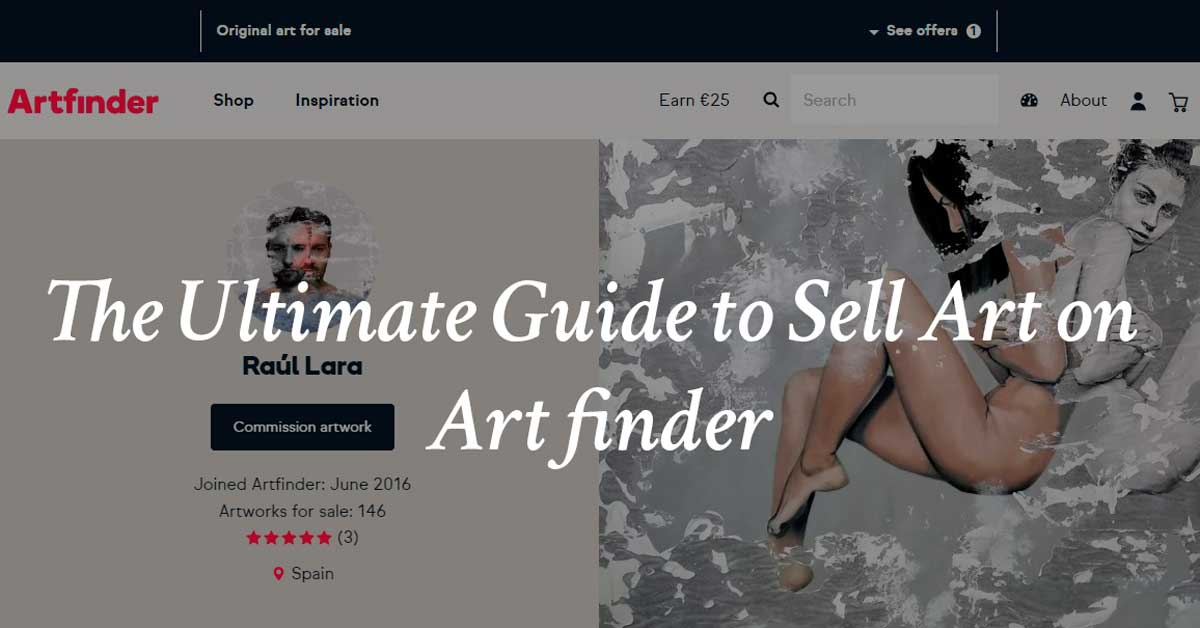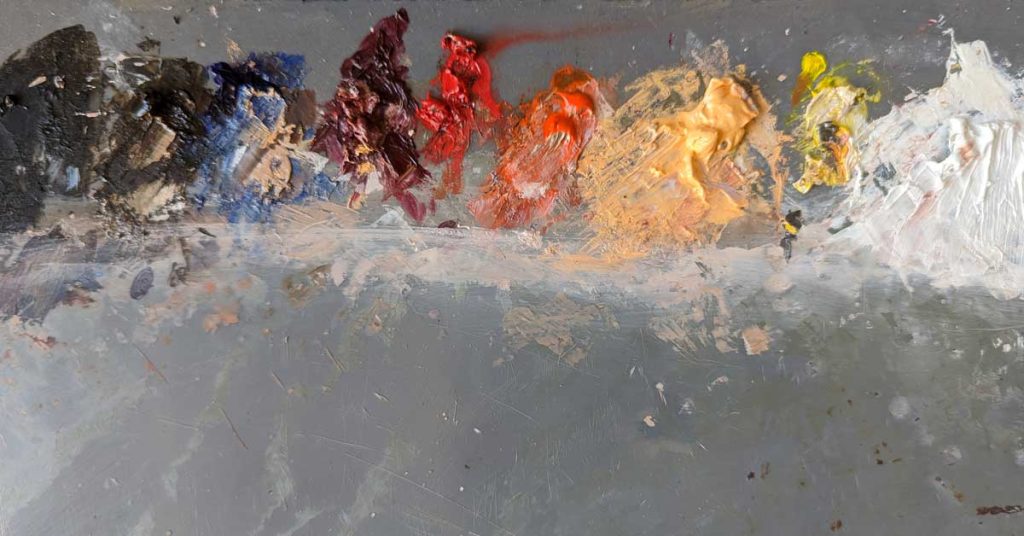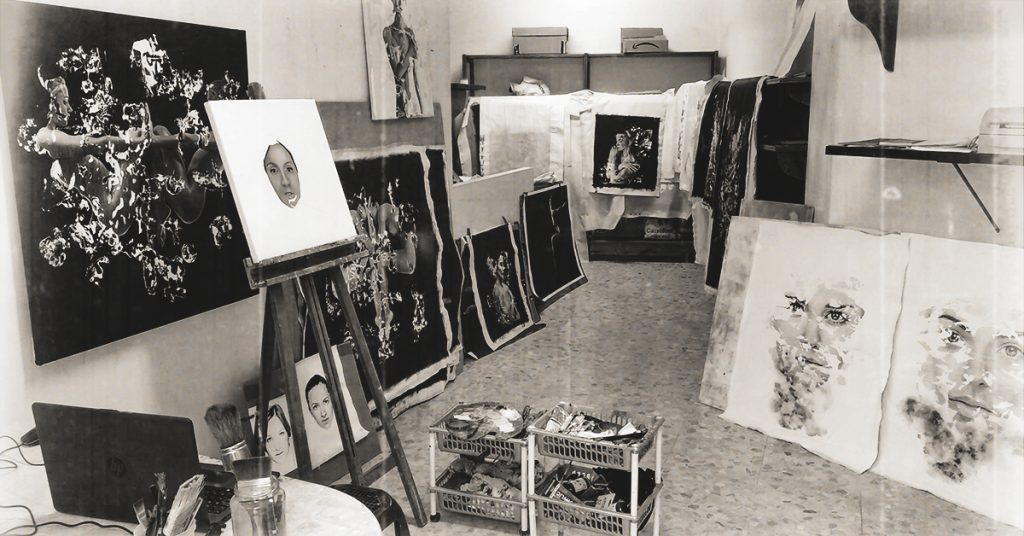
- Introduction
- Understanding the Artfinder Platform
- Getting Started on Artfinder
- The Artfinder Marketplace
- Pricing and Fees on Artfinder
- Pros and Cons of Selling on Artfinder
- Artfinder Sell Process: From Sale to Delivery
- Selling Art Online: Profitability and Success
- Exploring Alternative Platforms
- Choosing the Best Site to Sell Art
- Conclusion
- FAQs
Introduction
In today’s digital age, we artists have an incredible opportunity to reach a global audience and sell our art online. One of the prominent platforms that empowers artists in this endeavor is Artfinder. In this comprehensive guide, we will explore how you can effectively sell your art on Artfinder, the costs involved, the potential earnings, and alternative platforms to consider. So, let’s dive in and discover the world of online art selling!
Understanding the Artfinder Platform
Artfinder is an online marketplace that provides a platform for artists to showcase and sell their artwork to a global audience. It is a vibrant community where art enthusiasts and buyers can discover a wide range of art styles, mediums, and artists. Let’s delve into the key aspects of the Artfinder platform.
What is Artfinder?
Artfinder is an innovative online marketplace specifically designed for artists and art buyers. It serves as a bridge between talented artists and individuals passionate about owning unique and original artwork. Artists can create their profiles, upload images of their artwork, and provide detailed descriptions to engage potential buyers. Artfinder connects artists with a global audience, enabling them to gain exposure, recognition, and the opportunity to sell their art.
How does Artfinder work?
Artfinder operates on a simple and user-friendly interface that facilitates seamless transactions between artists and buyers. Artists can create a profile on Artfinder, where they showcase their artwork, share their artistic journey, and provide insights into their creative process. Buyers can browse through various categories, explore different art styles, and connect directly with artists whose work resonates with them.
When a buyer finds a piece they love, they can purchase it directly from the artist through the Artfinder platform. Artfinder ensures secure transactions and provides a safe environment for both artists and buyers. Artists are responsible for packaging and shipping their artwork to the buyers, while Artfinder handles the payment process and provides support throughout the transaction.
Can you sell art on Artfinder?
Absolutely! Artfinder is a platform dedicated to supporting artists in selling their art. If you are an artist looking to showcase your talent, gain exposure, and reach a global audience, Artfinder offers a valuable opportunity. By creating an artist profile, uploading high-quality images of your artwork, and providing compelling descriptions, you can attract potential buyers and sell your art on the platform.
Artfinder’s marketplace is highly curated, ensuring that the artwork displayed maintains a certain level of quality and originality. This approach not only benefits artists but also provides buyers with a selection of exceptional artworks to choose from.
Selling art on Artfinder allows artists to tap into a community of art lovers and collectors who appreciate and support the creative process. It opens doors to new opportunities, connections, and potential collaborations. So, if you are an artist seeking to share your art with the world and connect with a diverse audience, Artfinder is an excellent platform to explore.
Remember, showcasing your art on Artfinder is just the beginning. To increase your chances of success, it’s crucial to actively promote your artwork, engage with the Artfinder community, and continuously refine your craft.
Getting Started on Artfinder


To embark on your selling journey on Artfinder, it’s essential to kickstart your experience by following these key steps:
Creating an Artist Profile
The first step in selling your art on Artfinder is creating a captivating artist profile. This profile acts as your digital portfolio, representing your unique artistic style and personality. Take the time to craft a compelling bio that showcases your artistic background, influences, and artistic vision. Remember to highlight any notable achievements, exhibitions, or recognition you’ve received for your artwork. This will help potential buyers understand your artistic journey and establish a connection with your work.
Uploading Your Artwork
Once your artist profile is set up, it’s time to showcase your artwork. Select high-quality images of your artwork that accurately represent the colors, textures, and details of each piece. Artfinder recommends using well-lit and clear photographs to capture the essence of your artwork. Uploading a variety of artworks across different mediums and styles can attract a broader audience. Remember to include relevant tags and keywords that describe your artwork to optimize its visibility on Artfinder’s search results.
Writing Captivating Descriptions
Compelling descriptions play a crucial role in attracting potential buyers and conveying the story behind your artwork. Take the time to write detailed and engaging descriptions for each piece. Describe the inspiration, concept, and emotions evoked by the artwork. Consider sharing the techniques used, the materials employed, and any interesting anecdotes related to the creation of the artwork. This narrative will provide buyers with a deeper understanding of your art and create a connection between the viewer and the artwork.
Optimizing Your Art for Online Selling
To maximize your chances of selling art on Artfinder, it’s essential to optimize your artwork for online selling. This involves ensuring that your images are high-resolution and accurately represent the colors and details of the artwork. Additionally, consider pricing your artwork competitively based on factors such as size, medium, complexity, and your artistic experience. Researching and understanding market trends can help you determine the appropriate pricing strategy. Regularly reviewing and updating your art listings can also keep your profile fresh and engaging for potential buyers.
By following these steps and taking the time to create a captivating artist profile, showcase your artwork effectively, write engaging descriptions, and optimize your art for online selling, you’ll be well on your way to success in selling your art on Artfinder. Remember, the platform offers a unique opportunity to connect with art enthusiasts worldwide and establish yourself as a successful artist in the online art marketplace.
The Artfinder Marketplace


As an artist looking to sell on Artfinder, understanding the dynamics of the marketplace is crucial. Here are some key aspects to consider when navigating the Artfinder marketplace and maximizing your selling potential:
Navigating the Artfinder Marketplace
Artfinder provides a user-friendly platform that connects artists with potential buyers worldwide. Take the time to explore the different sections and features of the marketplace. Familiarize yourself with the search options, filters, and categories to ensure your artwork is discoverable by interested buyers. Understanding how buyers navigate the platform will help you position your art effectively.
Standing Out Among Other Artists
With a vast community of artists on Artfinder, it’s essential to find ways to differentiate yourself and capture the attention of potential buyers. Develop a unique artistic style that reflects your individuality and resonates with your target audience. Emphasize what makes your art special and showcase your artistic voice. Engage with the Artfinder community by participating in forums, commenting on other artists’ work, and seeking collaborations. Building meaningful connections can enhance your visibility and attract potential buyers.
Utilizing Keywords Effectively
Keywords play a crucial role in helping buyers discover your artwork on Artfinder. Incorporate relevant keywords, including variations of “sell on Artfinder,” throughout your artist profile, artwork descriptions, and tags. Think about the terms potential buyers might use when searching for art online. Balancing popular keywords with niche-specific terms can increase your visibility and attract a more targeted audience. Regularly review and update your keywords to align with current trends and market demands.
Promoting Your Artwork on Social Media
Leveraging social media platforms can significantly amplify your reach and attract potential buyers to your Artfinder profile. Share high-quality images of your artwork, along with compelling captions and relevant hashtags, on platforms such as Instagram, Facebook, and Twitter. Engage with your followers and art communities by responding to comments, participating in art challenges, and collaborating with fellow artists. Direct interested viewers to your Artfinder profile to facilitate sales and build your online presence.
By effectively navigating the Artfinder marketplace, finding unique ways to stand out, utilizing keywords strategically, and leveraging the power of social media, you can increase your chances of selling your art successfully. Remember, Artfinder provides a vibrant community of art enthusiasts, and by actively participating and promoting your artwork, you can tap into a global audience of potential buyers and art collectors.
Pricing and Fees on Artfinder
When it comes to selling on Artfinder, understanding the pricing and fees associated with the platform is essential. Let’s explore some key points regarding the cost of selling on Artfinder and how you can maximize your earnings as an artist.
How Much Does It Cost to Sell Art on Artfinder?
Artfinder offers different membership plans for artists, each with its own pricing structure. Artfinder provides three different seller plan subscriptions: the Starter plan, the Standard plan and the Professional plan. The Basic plan is completely free. The Standard plan costs.5 $ a month, it gives you up to 10 % discount on promotional packages and gives you access to advanced page view analytics among other features. Finally, the Professional plan, it cost 12 $ a month, allows you to add videos to your artwork listings, schedule artworks to be published in the future and many other interesting benefits. Here you´ll find more information on Artfinder subscription plans.
Is It Free to Sell Art on Artfinder?
While the Basic membership on Artfinder is free, it’s important to understand that the platform operates on a commission basis. When you make a sale through Artfinder, they will deduct a commission from the final sale price. The commission structure varies depending on your subscription plan, and Artfinder typically takes a percentage of the sale price, which covers transaction fees, marketing efforts, and the platform’s operational costs. It’s crucial to review Artfinder’s terms and conditions or contact their support team to get specific details regarding their current commission rates.
Understanding Artfinder’s Commission Structure
Artfinder’s commission structure ensures that the platform remains sustainable and can continue providing a robust marketplace for artists and buyers. By taking a commission, Artfinder invests in marketing your artwork, expanding their reach, and promoting the platform to a wider audience. This increased visibility can lead to more potential buyers discovering and purchasing your art. Understanding the commission structure will help you set appropriate prices for your artwork to account for both the platform’s commission and your desired earnings.
Maximizing Your Earnings as an Artist
While Artfinder’s commission structure is a factor to consider, there are strategies you can employ to maximize your earnings as an artist. First and foremost, pricing your artwork competitively and considering factors such as size, medium, complexity, and your artistic reputation can help attract potential buyers. Additionally, continuously improving your skills, experimenting with new techniques, and creating high-quality art can increase the perceived value of your work.
Furthermore, engaging with the Artfinder community, actively promoting your artwork, and participating in art events can create more exposure for your pieces. Establishing a strong online presence, both on Artfinder and through your own website or social media platforms, can also contribute to increased sales opportunities.
Ultimately, understanding the pricing and fees on Artfinder, setting your prices strategically, and actively promoting your art can help you maximize your earnings as an artist on the platform. By finding the right balance between pricing and commission rates, you can attract buyers while ensuring a fair return for your artistic efforts.
Pros and Cons of Selling on Artfinder
Artfinder is a popular online platform that connects artists with art buyers from around the world. While it offers numerous benefits for artists, it also comes with its own set of challenges and limitations. Let’s explore the pros and cons of selling on Artfinder:


The Advantages of Artfinder
The Challenges and Limitations
Key Considerations for Artists
Artistic Alignment: Artists should assess whether their artistic style and genre align with the preferences of Artfinder’s audience and curatorial standards. This alignment can increase the chances of acceptance and success on the platform.
Pricing Strategy: Developing a sound pricing strategy is crucial on Artfinder. Artists need to consider factors like materials, time invested, market demand, and the platform’s fees when determining the price of their artwork. Striking a balance between affordability for buyers and fair compensation for artists is essential.
Engagement and Promotion: Active engagement with the Artfinder community and promoting artwork beyond the platform can boost an artist’s success. Participating in discussions, collaborating with other artists, and utilizing social media and personal networks can help expand the reach and attract potential buyers.
Continuous Improvement: Artists should strive for continuous improvement in their art and business practices. Regularly updating their portfolio, experimenting with new techniques, and seeking feedback from buyers and fellow artists can contribute to growth and success on Artfinder.
In conclusion, selling art on Artfinder offers artists numerous advantages, including global reach, a supportive community, curation, marketing support
Artfinder Sell Process: From Sale to Delivery


“Congrats! You have just sold 1 artwork to ….” This is the message you will receive every single time you sell art on Artfinder. Your artwork has found a new home, and now it’s time to ensure a smooth and secure delivery process. Here’s a step-by-step guide to help you navigate the journey from sale to the client’s home on the Artfinder platform.
Confirmation of Sale
Once a buyer purchases your artwork on Artfinder, you will receive a confirmation notification as well as the packing slip. Take a moment to acknowledge the sale and express your gratitude to the buyer for their support. Promptly review the details of the sale, including the buyer’s shipping address and any specific instructions provided.
Packaging and Protection
Carefully package your artwork to ensure its safe transportation. Use appropriate materials such as bubble wrap, packing peanuts, or foam inserts to protect the artwork from damage during transit. Consider using sturdy boxes or art-specific shipping containers to provide additional security.
Shipping Method Selection
Choose a reliable shipping method that suits the size, weight, and fragility of your artwork. Artfinder provides shipping guidelines and recommendations to help you make informed decisions. Consider options that offer tracking, insurance, and signature confirmation for valuable pieces.
Shipping Label and Documentation
Generate and attach the shipping label provided by the chosen shipping carrier. Ensure all required documentation, such as customs forms for international shipments, is completed accurately and securely affixed to the package. Double-check that the buyer’s address is correct on the label. Remember that is a work that has to be done by you, Artfinder does not involve in the shipping process.
Shipping Communication
One of the best things that Arfinder offers is the direct contact with customers. Inform the buyer about the shipment of their artwork. Share the tracking information and estimated delivery time frame. This proactive communication helps build trust and keeps the buyer informed about the progress of their purchase.
Artwork Insurance
Consider obtaining insurance for the artwork during transit, especially for high-value or delicate pieces. Insurance provides financial protection in case of any unforeseen incidents or damages during shipping. Check with your chosen shipping carrier or explore third-party insurance options.
Frequent Updates
Stay updated on the progress of the shipment by tracking it regularly. Monitor the status and location of the package to ensure it is moving towards its destination smoothly. If any delays or issues arise, promptly communicate with the buyer and the shipping carrier to resolve them.
Delivery Confirmation
Once the artwork reaches its destination, confirm its safe arrival with the buyer. Reach out to them and kindly request confirmation that they have received the package in good condition. This final step ensures a satisfying transaction for both parties.
Post-Delivery Follow-up
After the artwork has been delivered, consider reaching out to the buyer to express your appreciation for their support and to inquire about their satisfaction with the purchase. This gesture demonstrates your commitment to customer satisfaction and fosters a positive relationship. Additionally, Artfinder recommends kindly asking the buyer to share their experience by leaving a review on the platform. By doing so, you not only gather valuable feedback but also help future potential customers make informed decisions. Your buyer’s review could be instrumental in inspiring trust and confidence in your artistic creations.
By following these steps, you can ensure a seamless and secure journey for your artwork from the moment of sale on Artfinder until it reaches the client’s home. Clear communication, careful packaging, and reliable shipping methods contribute to a positive buying experience and reinforce your reputation as a trusted artist on Artfinder.
Selling Art Online: Profitability and Success


Selling artwork online has become an increasingly popular avenue for artists to showcase their talent and reach a global audience. If you’re considering selling your art online, it’s important to understand the profitability potential and the key strategies for achieving success. Let’s explore some essential aspects of selling art online and how you can increase your chances of profitability.
Is Selling Artwork Online Profitable?
The profitability of selling artwork online can vary depending on various factors, such as the demand for your art, the uniqueness of your style, the quality of your artwork, and your marketing efforts. While it’s true that the online art market is highly competitive, it also offers significant opportunities for artists to connect with art enthusiasts worldwide. By leveraging the right platforms and employing effective marketing strategies, many artists have been able to establish successful online art businesses and generate substantial income. It’s crucial to approach online art selling with a well-thought-out plan, realistic expectations, and a commitment to continuous improvement.
Leveraging Multiple Online Platforms
To maximize your reach and increase your chances of success, it’s advisable to leverage multiple online platforms for selling your art. While Artfinder is a reputable platform for selling art online, there are other popular art-selling websites like Saatchi Art, Artsy, Singulart, Etsy, Redbubble, and Fine Art America. By diversifying your presence across different platforms, you can tap into different audiences and increase your opportunities for sales. Each platform may have its own unique features, target audience, and selling dynamics, so it’s essential to adapt your approach accordingly and tailor your listings to optimize your visibility and appeal.
Building a Strong Online Presence
Building a strong online presence is crucial for selling art online successfully. This involves not only having a well-curated profile on platforms like Artfinder but also establishing your own website or portfolio to showcase your art. Your website can serve as a hub where potential buyers can learn more about you as an artist, view your portfolio, and make direct purchases. It’s important to create a visually appealing and user-friendly website that reflects your artistic style and personality. Additionally, actively engaging with social media platforms, such as Instagram, Facebook, and Twitter, can help you connect with a broader audience, share your artistic journey, and attract potential buyers to your online platforms.
Engaging with Your Audience and Customers
Engaging with your audience and customers is vital for cultivating meaningful relationships and driving sales. Actively respond to comments, messages, and inquiries promptly and professionally. Show appreciation to your followers and customers for their support and feedback. Engage in conversations about your art, share behind-the-scenes glimpses into your creative process, and offer insights into your inspirations and techniques. By fostering a sense of connection and building a community around your art, you can develop a loyal fan base and encourage repeat purchases and referrals.
Remember that selling art online requires patience, perseverance, and a proactive approach. Continuously refining your artistic skills, adapting to market trends, and staying abreast of industry developments can help you remain competitive and increase your chances of profitability. By leveraging multiple online platforms, building a strong online presence, and engaging with your audience, you can create a solid foundation for success in the online art market.
Read this article for more in depth information on how to sell your art online and unlock your global potential
Exploring Alternative Platforms
While Artfinder is a reputable platform for selling art online, it’s important to explore alternative platforms that can provide additional opportunities to showcase and sell your artwork. Let’s take a closer look at some popular alternatives to Artfinder and compare their features and benefits.
What are the Alternatives to Artfinder?
Saatchi Art
Saatchi Art is a well-established online art gallery that connects artists with potential buyers worldwide. It offers a wide range of artworks across various mediums and styles. Saatchi Art provides artists with a platform to showcase their art, participate in curated collections, and gain exposure to a diverse audience.
Check this article and unlock your selling success in the platform.
Artsy
Artsy is an online marketplace that brings together galleries, collectors, and artists. It provides a platform for artists to showcase their artwork alongside established galleries, allowing for increased visibility and potential sales. Artsy focuses on contemporary art and offers a range of artworks across different price points.
Singulart
Singulart is a curated online art gallery that showcases artworks from emerging and established artists. It offers a selection of high-quality artworks in various styles and mediums. Singulart emphasizes promoting artists and their stories, helping to establish a connection between artists and collectors.
Etsy
While primarily known as a platform for handmade and vintage goods, Etsy also provides a space for artists to sell their art. It offers a wide range of creative products, including paintings, prints, and sculptures. Etsy provides artists with a platform to showcase their unique creations and tap into a large community of art enthusiasts.
Comparing Art Selling Websites
When considering alternative platforms to Artfinder, it’s essential to compare and evaluate the features and benefits they offer. Here are some factors to consider:
Reach and Audience
Assess the platform’s reach and target audience. Look for platforms that have a significant user base and attract art collectors and enthusiasts who are interested in your style and medium.
Curated vs. Open Marketplace
Determine if the platform is a curated gallery or an open marketplace. Curated platforms often provide a higher level of curation, which can enhance the perceived value of your artwork.
Fees and Commission Structure
Understand the platform’s fee structure and commission rates. Compare the costs associated with listing, selling, and shipping your artwork to ensure it aligns with your profitability goals.
Promotion and Marketing Support
Consider the platform’s efforts in promoting artists and artworks. Look for platforms that actively market and feature artists to increase visibility and reach potential buyers.
User Experience and Interface
Evaluate the platform’s user experience, interface, and ease of use. A user-friendly platform can make it easier for potential buyers to discover and purchase your artwork.
By exploring alternative platforms like Saatchi Art, Artsy, Singulart, Etsy, and others, you can expand your online presence and tap into different audiences and markets. Take the time to compare these platforms based on their reach, fees, promotional support, and user experience to make an informed decision about which platforms align best with your goals as an artist. Remember, diversifying your presence across multiple platforms can increase your visibility and potential for selling art online.
Choosing the Best Site to Sell Art
When it comes to selling your art online, choosing the right platform is crucial to maximize your sales and reach a wider audience. Here are some factors to consider when selecting a platform to sell your art:
Factors to Consider when Selecting a Platform
Target Audience: Evaluate the platform’s target audience and determine if it aligns with your target market. Look for platforms that attract art enthusiasts, collectors, and individuals who are specifically interested in your style or genre of art.
User Interface and Experience: Consider the platform’s user interface and experience. A well-designed and intuitive platform can enhance the browsing and buying experience for potential customers, increasing the chances of selling your art.
Visibility and Reach: Assess the platform’s visibility and reach in the online art community. Look for platforms with a significant user base and a strong online presence, as this can potentially expose your artwork to a larger audience.
Fees and Commission Structure: Understand the platform’s fees and commission structure. Some platforms charge listing fees, transaction fees, or a commission on each sale. Compare these costs to ensure they align with your budget and expected earnings.
Promotion and Marketing Support: Evaluate the platform’s promotional and marketing efforts. Look for platforms that actively promote their artists and artworks through various channels, such as social media, newsletters, or featured artist sections. This can significantly increase your exposure and attract potential buyers.
Evaluating the Benefits and Drawbacks
Each platform has its own set of benefits and drawbacks. Consider the following aspects when evaluating a platform:
Artwork Curation: Some platforms curate their artworks, ensuring a certain level of quality and uniqueness. While this can enhance the perceived value of your art, it may also make it more challenging to get accepted if your style or genre doesn’t align with their curation standards.
Competition: Take into account the level of competition on the platform. A crowded marketplace can make it harder to stand out among other artists. Conversely, a less saturated platform may offer more opportunities for exposure.
Artwork Presentation: Assess how the platform allows you to present and showcase your artwork. Look for features like high-resolution images, zoom capabilities, and the ability to include detailed descriptions. These features can help potential buyers appreciate the quality and intricacies of your art.
The Best Site to Sell Art for Free
If you’re an artist seeking a platform to sell your art without incurring upfront costs, you’ll be pleased to know that there are options available. Not only Artfinder, but other platforms like Saatchiart or Singulart provide a free listing option for artists to showcase and sell their artwork. All these art selling platforms are renowned for their diverse range of handmade and creative art pieces as paintings, drawings or photographs. They offer a user-friendly interface, a vibrant community of art enthusiasts, and various tools to effectively manage your shop and connect with potential buyers.
While the prospect of selling art for free may be enticing, it’s important to note that these platforms may have transaction fees or commission structures in place. Familiarize yourself with their fee policies to gain a clear understanding of the costs associated with utilizing their platform.
It’s essential to remember that the “best” site to sell art for free will vary depending on your unique goals, target audience, and personal preferences as an artist. Take into account the factors discussed above, thoroughly evaluate different platforms, and make a well-informed decision based on how well they align with your artistic style, financial considerations, and long-term aspirations.
Ultimately, the right platform for you will be the one that provides the necessary exposure, supports your artistic vision, and offers a balance between cost-effectiveness and reaching your desired audience. By carefully weighing your options and selecting a platform that resonates with your artistic journey, you can showcase your art to a wider audience while staying true to your creative and financial objectives.
Conclusion
Selling art online has revolutionized the art industry, providing artists with unprecedented opportunities to showcase and sell their work to a global audience. Artfinder is a prominent platform that empowers artists to succeed in this digital landscape. By understanding the platform, optimizing your listings, and actively engaging with the community, you can maximize your chances of selling art online and building a thriving artistic career.
FAQs
1. Can you sell art on Artfinder?
Absolutely! Artfinder provides a platform for artists to sell their art online and connect with art enthusiasts worldwide.
2. How much does it cost to sell on Artfinder?
Artfinder offers both free and paid options for artists, allowing you to choose a plan that suits your needs.
3. Is it free to sell on Artfinder?
Yes, it is free to sell on Artfinder with their Basic plan. However, Artfinder applies a commission on each artwork sold.
4. How much do artists make on Artfinder?
The earnings of artists on Artfinder vary depending on factors such as artwork pricing, sales volume, and Artfinder’s commission structure.
5. Is selling artwork online profitable?
Selling artwork online can be profitable, but it requires strategic marketing, consistent effort, and engagement with the online art community.




